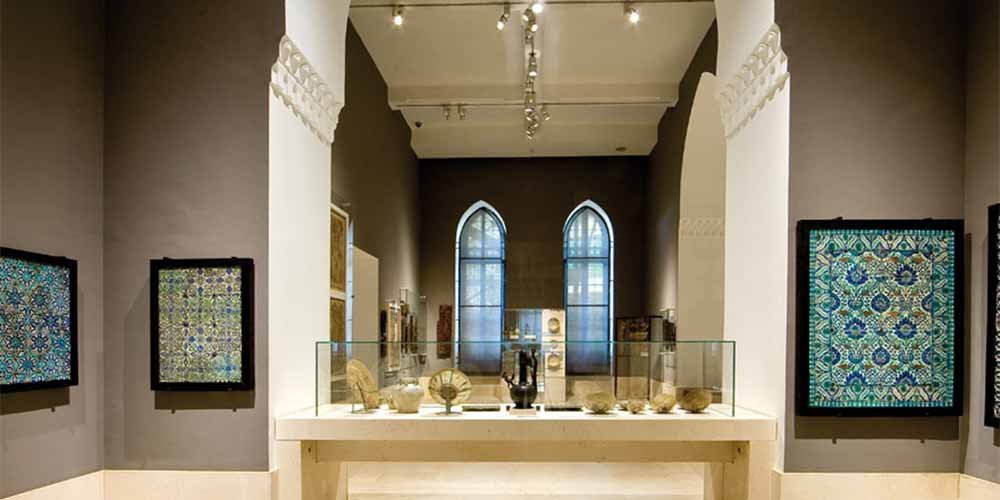Wonderful Museum of Islamic Art.
When was Museum of Islamic Art built?
The Museum of Islamic Art houses one of the world’s most extensive and diverse collections of Islamic artifacts. The concept of collecting and displaying a grand collection of artifacts originated in 1880 AD. Eventually, the structure was built and inaugurated in 1903 AD, during the reign of Khedive Abbas Helmy ll. The building, which is adjacent to Egypt’s National Library, has a Mamluk-style facade.
In 2014, an explosion aimed at the opposite building (Cairo Security Directorate) damaged the façade. It underwent restoration and reopened in 2017. The museum’s two floors house a diverse collection of artifacts from around the world, covering topics such as astronomy, medicine, and architecture. The extensive collection takes visitors on a journey through all eras of Islamic history, displaying some of the most magnificent artifacts. These include exquisitely carved woodwork, intricately decorated ceramics, and rare manuscripts.
The museum’s most notable possessions include a Mamluk key to the Ka’ba in Mecca and a textile with the oldest Kufic inscription.
Enjoy the beautiful designs of the museum of islamic art during your tour inside it. Which highlights the beauty and elegance of Islamic architecture in different countries.
Museum of Islamic Art in Cairo Museum is one of the largest museums specializing in Islamic art. You will see a variety of Islamic art from India, China, and Iran and this is very interesting. Because they are gathered in one place, and you will see a museum carved with the arts of the Arabian Peninsula. So it is one of the best tourist attractions in Cairo that you enjoy visiting.
rld dedicated to Islamic art and artifacts. The museum was founded in 1881, and its collection spans from the 7th-century Umayyad dynasty to the 19th-century Ottoman Empire. In 1903 the museum moved to its current building in Bāb Al-Khalq square.
The Egyptian khedive Tawfīq gave the decree that led to the establishment of the Museum of Arab Art in 1881. The decree authorized a group of European and Egyptian art preservationists, led by the Hungarian architect and conservator Max Herz, to gather detached fragments from historic structures in Cairo that had fallen into disrepair. These items were the beginnings of the modern museum’s collection and were housed in the mosque of the Fatimid caliph al-Ḥākim. In 1903 the collection moved to a new museum building designed by Alfonso Manelesco in a neo-Mamluk style. In 1952 the museum changed its name to the Museum of Islamic Art.
Since then the museum acquired a substantial collection of artifacts from outside Egypt, representing most of the major periods of Islamic history and most regions of the Islamic world. The museum’s collection includes a number of notable artifacts, such as the oldest Islamic gold dinar ever found, dating to the 7th century CE; several rare Qurʾāns; a restored Mamluk mosaic fountain; and an engraved ewer, or jug, taken from a grave thought to be that of the last Umayyad caliph, Marwān II.
By 2003 the Museum of Islamic Art’s collection had swelled to more than 100,000 objects, making the exhibitions cramped and difficult for visitors to navigate. The Egyptian government elected to renovate and reorganize the museum, a seven-year project that was carried out in consultation with the Islamic art department of the Louvre and the Aga Khan Trust for Culture. The redesigned museum, which opened to visitors in 2010, displays only a small selection from the entire collection, with one wing devoted to Egyptian exhibits and another devoted to art from the rest of the Islamic world.
It was opened in 1903, in Bab Al-Khalq Square. It is considered the most prominent educational institution in the world concerned with the field of Islamic antiquities. As it contains more than 100,000 artifacts, and the design of the museum is characterized by luxury and decorative richness inspired by Time Traveler’s Delight: Unforgettable Day Tours in Historic Cairo. So it is one of the most important tourist attractions in Egypt.



Comment (0)